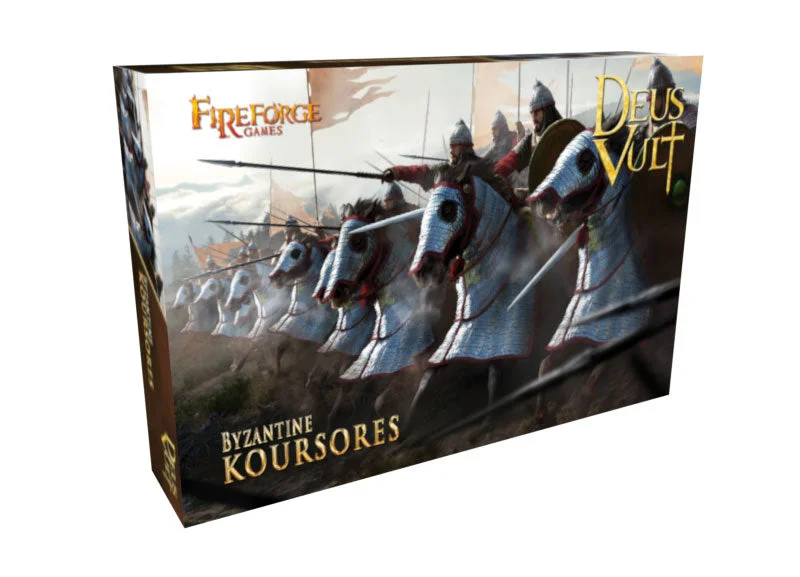- Deus Vult (“God Wills It”) series
- Byzantines collection
- 12 Highly detailed figures
- 8 frames (2 x Koursores, 4 x horses)
- 12 25 mm x 50 mm square bases
- Requires assembly and painting. Glue and paint not included.
- Molded in gray plastic with bases.
- Recommended for collectors and hobbyists 12 years and above.
This box enables you to build 12 Byzantine Horse Koursores.
A category of cavalryman termed a koursōr (pl. koursores) is documented in Byzantine military literature from the sixth century onwards. The term is a transliteration of the Latin cursor with the meaning 'raider' (from cursus: course, line of advance, raid, running, speed, zeal - in Medieval Latin a term for a raider or brigand was cursarius, which was the origin of 'corsair'). According to one theory, it is posited as the etymological root of the term hussar, used for a later cavalry type. The koursōr had a defined tactical role but may or may not have been an officially defined cavalry type. Koursores were mobile close-combat cavalry and may be considered as being drawn from the more lightly equipped kataphraktoi. The koursores were primarily intended to engage enemy cavalry and were usually placed on the flanks of the main battle line. Those on the left wing, termed defensores, were placed to defend that flank from enemy cavalry attack, whilst the cavalry placed on the right wing, termed prokoursatores, were intended to attack the enemy's flank. Cavalry on detached duty, such as scouting or screening the main army, were also called prokoursatores. It is thought that this type of cavalry were armed identically to the heavy kataphraktoi but were armoured more lightly, and were mounted on lighter, swifter horses. Being relatively lightly equipped they were more suited to the pursuit of fleeing enemies than the heavyweight kataphraktoi. In the Komnenian period, the more heavily equipped of the kataphraktoi were often segregated to create formations of "picked lancers," presumably the remainder, being more lightly equipped, provided the koursores. A type of cavalry, differentiated from both horse archers and those with the heaviest armour, is referred to by Kinnamos in 1147 as forming a sub-section of a Byzantine army array; they are described as "those who rode swift horses," indicating that they were koursores, though the term itself is not employed

